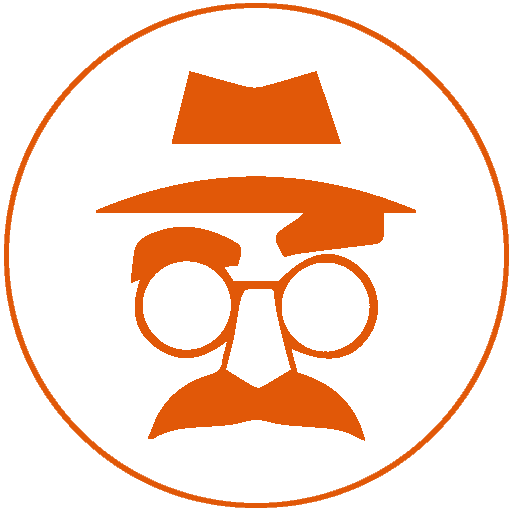This is a text automatically translated from Italian. If you appreciate our work and if you like reading it in your language, consider a donation to allow us to continue doing it and improving it.
Content index
The articles of Cassandra Crossing I'm under license CC BY-SA 4.0 | Cassandra Crossing is a column created by Marco Calamari with the "nom de plume" of Cassandra, born in 2005.
We recently published a series of new articles by Cassandra on artificial intelligences that you can find here. We thought it would be interesting to also publish these two articles from 2016 on similar topics.
This article was written on June 22, 2016 from Cassandra
Cassandra Crossing 373/ Dawn of Skynet
From man who speaks the language of the machine to the machine that interprets man, from algorithms to neural networks. The frontier of research, military and market, is AI. With what risks?
“Aridaje, the usual alarmist title peppered with an old cinematic quote”, will say the Romans included in the 24 readers. Nothing to say about quotes, Cassandra has a bad habit, but it must be acknowledged that she has never been ashamed of them, on the contrary. No, it's not an alarmist headline. Research on artificial intelligence (AI) has recently taken a step forward, as important as it is predictable, but nevertheless insidious enough to have escaped many. And here we need a strong dose of IT pills, so the knowledgeable will excuse me for the simplifications, and if they want they will skip to the last lines of the article, while the less knowledgeable will put up with me.
Well, since the time of Charles Babbage and his never-finished difference machine it was very clear that automatic computers (the term "computer" was yet to come) would contain a set of instructions, created by the "programmer", which the computer would follow faithfully and blindly, "Perinde ac cadaver", as a Jesuit would say.
Ah, how Cassandra misses the Steampunk world! But let's get back to us.
Nothing or almost nothing changes until the 1940s, with Zuse and his Z3, first binary relay computer (therefore electromechanical).
In the 1950s, computers with vacuum tubes such as arrived Eniac, a thousand times faster.
But even the Eniac was programmed "mechanically" by directly wiring electrical connections: the software did not yet exist. A matter of a few years and programming languages were invented, which definitively separated the hardware from the software, and after a short while we moved on from assembler (man speaks the language of the machine) to high level languages such as FORTRAN, COBOL, Lisp... the list is endless but from now on it will be the Computer that will have to understand the language of Man, and not the other way around. The story pill ends here, with a slave who understands his master's language and follows him faithfully better than a Newfoundland, bugs and failures permitting, obviously. Let's now forget about computers and come to software. The languages in which programs are written The usual ones are "Imperatives", that is, in simple terms, they are precise instructions that define an algorithm, a predetermined sequence, perhaps extremely complex and dependent on factors external to the program, but totally predictable and repeatable. To solve certain problems, typically related to business , in which we know how to write the rules but not how to organize them in an algorithm, the so-called "expert systems" were born: by giving input to an expert system, filled with a certain set of rules, this will follow a path in principle not predictable among its rules and will provide a result. An expert system can however always perform "backtracking" and explain how and in what sequence it applied the rules to obtain the result, a result which is however always repeatable. For yet other classes of problems, when only the problem is known, a set of questions with the relative answers, but the rules that would allow the use of an expert system are not known, neural networks have been invented. A choice is made based on esoteric considerations, a certain type of neural network and then it is "trained", submitting it questions with the relative answers, which the neural network stores internally in a set of data devoid of intelligible meanings. At this point, if you are presented with a question "quite similar" to those you have trained with, the network will "most likely" provide the right answer. Again, given the same training and question, the answer is repeatable, but the fact that the neural network correctly answers a question very similar to the previous one is not guaranteed. For example, if you were shown a set of photos with the definition "terrorist" or "non-terrorist" in normal skills, the neural network will probably associate the keffiyeh with being a terrorist (on the other hand, not many people do ?) and if you were shown a photo of Bin Laden with a straw hat and a pipe you would say he is not a terrorist.
In parallel with all this, work is being done on "Artificial Intelligence". Nobody knows what exactly we are talking about, except the deceased (or rather murdered) Alan Turing, who proposed a test that has remained the reference for understanding whether an artificial intelligence is intelligent enough.
This infinite premise is over and we return to current events. Even if people over sixty have been hearing about artificial intelligence for 40 years, and have therefore developed a certain skepticism on the matter, such as that on nuclear fusion, in fact there has been slow progress in the field of AI, even if simultaneously moving on different lines of research. And in the meantime, literature and cinema have given us all the possible examples of what artificial intelligences could be and how they could be used, or rather behave.
From Wintermute of “Neuromancer” to Master Control Program of “Tron”, from the nameless supercomputer of The answer to the sexy and bloodthirsty girls in search of themselves in "Ex-machina", from the shy and sappy dolls of "AI" to the entity exterminating the human race in "Terminator", Skynet.
Yes, Skynet, which has become a bit of an archetype for teasing the Cassandras of the moment. Well, the fact that there isn't much to joke about about the danger that real artificial intelligence could represent is starting to be taken seriously. Why danger? Because those who guide the development processes of new technologies are, as is normal, the military, large industry and, ultimately, capital. The above is not a political polemic or feel-good prose, it is simply the best concise and disenchanted description that poor Cassandra can do.
On the other hand, now that AI is replacing genomics as the next big technological and business revolution, the first confirmations are starting to appear. From the project aired by the United States Navy to automate nuclear missile submarines (but is “Doctor Strangelove” forbidden to the military?) to the continuous use of robotics to automate weapons, the path to creating “malevolent” AI, not by mistake but “ by design”, has become a academic research field.
Even the fact that an AI can rebel, or rather escape from the hands of its creators, as in the third-rate pulps of the 1950s, is objectively creeping into the real world, given that there are researchers who, not knowing how to build AI, are seriously working for let today's AI build better AI.Research is truly active in once unthinkable sectors. And what consequences could this have?
Let's draw a parallel with the tests of malware developers, released in an "experimental" manner such asInternet Worms of Morris, SQL slammer or the very recent Irongate, a more cosmopolitan relative of Stuxnet, the first cyber weapon dropped against a real adversary. The Irongate experiment probably represents the malware bridge to the Internet of Things and the Industrial Internet.
Did you know that Morris apparently just wanted to measure the size of the Internet when he released his worm? And that the SQLSlammer experiment did not lead to subsequent developments? While many insiders are really worried about what Irongate means, i.e. a test for future attacks on the Internet of Things? But today we put the malware topic aside (reluctantly), because what interests us is to remember the nefarious results and dangers incurred due to "experiments" carried out by enthusiastic technologists.
So let's finish very quickly. Having Artificial Intelligences programmed by other Artificial Intelligences, with some CEO or some general behind you to encourage you with noble reasons, such as company dividends or the fight against the bad guys, what does this come to mind? Precisely.
This article was written on July 19, 2016 from Cassandra
Cassandra Crossing 375/ Three steps into delirium: from AI to Skynet
Even prophets are fussy, and since the Skynet catchphrase on these pages is now frequent, and even some of the 24 fundamentalist readers have begun to complain, let's immediately dot the "i's", obviously referring back to the article on the AIs that create and train other AIs.
Cassandra has been specifically accused of having now fallen into the excess of Skynet and Terminator references; suggestions have come from many quarters to end it. To take them into due consideration, let it be clear that putting up with Cassandra's cinematic quotes and other linguistic-narrative quirks is the price you have to pay to be able to read her. Today Cassandra will not limit herself to reiterating the overused but always very valid quote from Skynet, but will even add a new one, that of Three steps into delirium, an ancient and excellent episodic mystery film, inspired by stories by Edgar Allan Poe and directed by Roger Vadim, Louis Malle and Federico Fellini.
Cassandra will only borrow the title to briefly describe the path that will lead to something equivalent to Skynet, outlining the path and the events that will mark the fundamental stages.
Well, for this “Mad in three moves” of AI towards humanity, three moves are necessary, or rather three (delirious) steps.
The first step for these new forms of life to become partially or totally autonomous has already been taken; “replication and evolution”. Cassandra has already raved about it in the previous episode of this miniseries. It consists precisely in the fact that the creators of AI have actively begun to work on AIs that modify themselves by producing other AIs that are better than them. Sorry if it's not much.
Today we talk about the second step; “evolution and selection”: the third fortunately does not appear to be imminent. Since 2015, DARPA has already established one of its very important “Grand Challenges”. Yes, "the" DARPA and not "the" DARPA, even if it is an Agency, because in Italian foreign words are not considered to have gender, they are not put in the plural, and the masculine includes the feminine in speech. And even if even the Accademia della Crusca has recently cleared the "Ministers" too, Cassandra will remain faithful to Miss Pia, her fifth grade teacher, who otherwise would be turning in her grave. But let's stop rambling like some over sixty year olds who are a bit stoned and let's get back to the point. Let's remember that DARPA, the research agency of the United States Department of Defense, was the financier of the Internet, and since then its money and that of the American military have been the root of most of the new information and robotic technologies, in a long journey that reaches TOR and self-driving cars.
His initiatives must therefore always be followed with the utmost attention, and in fact the second "step into delirium", the second move towards Skynet's checkmate of Humanity will see its start this August at DEFCON, where the challenge will take place among the seven finalists of the DARPA Cyber Grand Challenge (CGC) told in this, perhaps a little too watered down but still interesting, Wired article.
In short, seven teams of developers will unleash their respective AIs, each on a server of a group of 7, connected to each other in a perfectly isolated network. The software will be loaded, without getting close to the computers, via a CD-rom operated by a robotic arm, so that no one can "cheat". The computer network will not use one or more known operating systems, but a specific environment created for cybersecurity research, DECREE —DARPA Experimental Cybersecurity Research Evaluation Environment.
The system is deliberately incompatible with all existing network protocols and operating systems, such that the binaries that form the AI are absolutely incompatible with real-world programs and networks. These AIs on the other hand will be "good": they will have to identify the flaws purposely left in the servers and act in such a way as not to exploit them but to correct them. Of course, changing just one sign in this "equation"... Could it be for fear of providing elements to develop new cheap cyberweapons to rogue countries? Or rather to create autonomous organisms capable of escaping and reproducing in “real” Cyberspace? Or simply the application of good scientific practices, common to nuclear research, genomics and nanotechnologies, of always keeping experiments well confined for safety? But Cassandra is not bound by these very sensible reasonings, because she must continue to carry out her job as prophetess of doom, and therefore announces here that the second step towards Skynet will be taken on August 4 this year, from 5:00pm to 8:00pm Pacific time, with the release of autonomous AI, capable of learning and competition with each other, in a computer environment. In the Terminator saga, Skynet, all alone, went online on August 4, 1997 and began learning at an exponential rate. He became self-aware at 2:14 a.m. Atlantic time on August 29, 1997… and we know the rest of the story. Reality often lags behind science fiction, and this August at Defcon you'll see a lot of interesting things and nothing like this will happen. The rest of the summer will also be, at least from this point of view, completely calm. But in a year, in ten, when money and research on armaments will have reigned supreme in the field of AI too? No, even Cassandra realizes that a Skynet will not be born; However, he believes that smaller, but more numerous and more dangerous things will arise. So, blessed is the world that will never need one big or many little John Connors.
Marco Calamari

Video column “A chat with Cassandra”
Cassandra's Slog (Static Blog).
Cassandra's archive: school, training and thought
Join communities
If you have found errors in the article you can report them by clicking here, Thank you!







